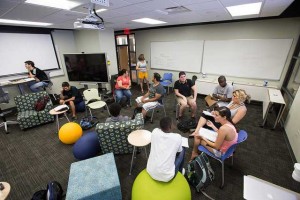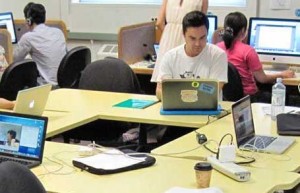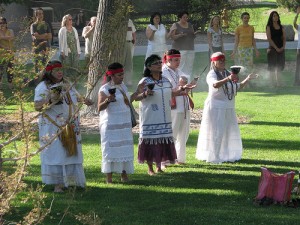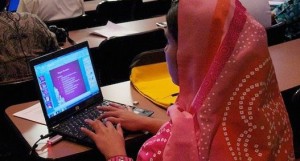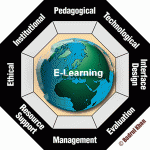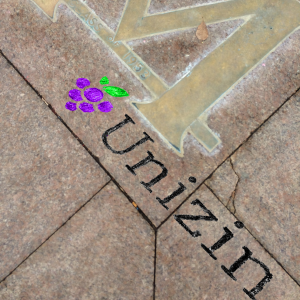The Academic Learning Transformation Lab (ALT Lab) at Virginia Commonwealth University (VCU) is a cooperative that models and inspires connected learning for a networked world through faculty development, student engagement, communities of practice, and technology enhanced active learning.
Inspired Examples
Inspired Examples
ANVILL-LTI, UO Yamada Language Center
The Yamada Language Center has produced a web-based application, ANVILL-LTI, that provides media-rich tools for language instruction, and made it available for free to qualified language educators working in not-for-profit educational institutions around the world.
Inspired Examples
Curanderismo MOOC, University of New Mexico
The University of New Mexico’s popular course on Southwestern folk healing, already offered as a summer intensive course for both degree-seeking and continuing education populations, is successfully “translated” for digital delivery to both local and global audiences.
Inspired Examples
Digital Driver’s License Program, St. Mary’s College of California

St. Mary’s is also developing hybrid degree programs to increase enrollment on a campus with limited physical space; the Digital Driver’s License is designed to facilitate faculty success in this modality.
The School of Economics and Business Administration at St. Mary’s College of California deployed a comprehensive instructional training program for their faculty in 2014 tied to the utilization of a newly created digital media center. Working in 6-person cohorts, all business school faculty will become certified as “digitally proficient teachers” within two years.
Inspired Examples
E-Teacher Scholarship Program and MOOCs, UO American English Institute
The E-Teacher Scholarship Program (funded by the US Department of State and administered by the American English Institute at UO) has in the past year served more than 100,000 English language educators in more than 180 countries worldwide (more than 90% were in locations outside the USA). These are a combination of MOOCs and instructor-led online/blended professional development courses with small cohorts of up to 25 participants each.
Inspired Examples
Flipped Class Workshop and Development Program, UO School of Architecture & Allied Arts

A “flipped” classroom moves content delivery online, in order to allow for more hands-on work when the class meets in person.
Educational technology staff within the School of Architecture and Allied Arts developed a “flipped” course development program, bringing together faculty from different academic departments to build an intentional pedagogical community. Faculty were trained in a variety of techniques through which a face-to-face course might be enhanced via online curriculum delivery, provided ongoing support as they implemented these techniques in their own teaching, and then invited to present to the faculty and staff of the entire school, thereby continuing the cycle of innovation.
Inspired Examples
Innovative Funding Models for Faculty Development

2008 Brian P. Copenhaver Award Reception for Innovation in Teaching with Technology, UCLA, Los Angeles, CA.
A wide variety of education institutions, including a number of those studied in Our Peers, are developing funding initiatives for faculty development, particularly when it comes to teaching with technology. Often funded via private donation, some of the most promising examples include grants and awards for innovative undergraduate education, faculty fellowships within instructional technology units, and internal “venture” funding. Many of these examples have the benefit of public endorsement from the school’s governing board, president, provost, or other campus leaders.
Inspired Examples
Innovative Models for Continued Faculty Technology Support

Consortial models allow for consistent messaging, such as this collaboratively-produced guide to teaching at the University of Missouri.
One of the most important issues facing technology service providers in a decentralized environment is the challenge of providing consistently impactful services over time. One negative customer service experience can have a longstanding deleterious effect on faculty buy-in. Three ways to improve the faculty experience over time might include: a consortial support model, split-FTE educational technology staff, and/or faculty-driven learning communities.
Inspired Examples
NextGen Michigan, University of Michigan
NextGen Michigan is a strategic program to create continuous update of IT systems, programs, and application for the entire university, deploying robust project management practices for major IT related projects. The LMS transition pilot (evaluating Canvas) is a great example of the project management process at work.
Inspired Examples
One Button Video Production, Pennsylvania State University
Pennsylvania State University tested out the One Button Studio system as a means of supporting the video production needs of faculty, students, and staff across all of their video production needs: for instruction, mentoring, studying, and all other academic activities. They began with two units and added ten more after a very successful, very popular pilot initiative.
Inspired Examples
Online Teaching Development, UO Arts and Administration Program
A department-based effort to create tools to encourage faculty members to update and innovate their course delivery, assisting them through the process of developing new courses and transitioning existing courses into hybrid and online delivery models. For detailed information, see Transitioning Courses from Face-to-Face to Online and Hybrid Delivery Models [PDF].
Inspired Examples
Universal Classroom Design
As many of our peer institutions build new buildings or renovate existing ones, more attention is being paid to questions of universal classroom design—that is, inclusive learning spaces that can be used for multiple teaching and learning modalities. Innovations include flexible seating arrangements, the strategic placement of additional projectors, screens and whiteboards, improved sound design for large active classrooms, and improved processes for renovation and design that better involve all campus stakeholders. The result is an improved experience for learners of all abilities. Read on for three inspiring examples!
Inspired Examples
Unizin
The Unizin Consortium is a member-owned (10 founding investor institutions, all large public R1 universities), invitation-only consortium designed to further cross-institutional partnerships and provide control over the digital education ecosystem, lower costs, establish alignment with standards and generate valuable, real-time data, while eliminating technical barriers.
Inspired Examples
Working Group for Active Teaching and Learning, University of Oregon
The The Working Group on Active Teaching and Learning is an annual partnership between the Teaching Effectiveness Program (TEP), the Center for Media and Educational Technologies (CMET), and the Yamada Language Center (YLC) that assists a small faculty cohort as they seek to introduce active learning concepts into their courses.
